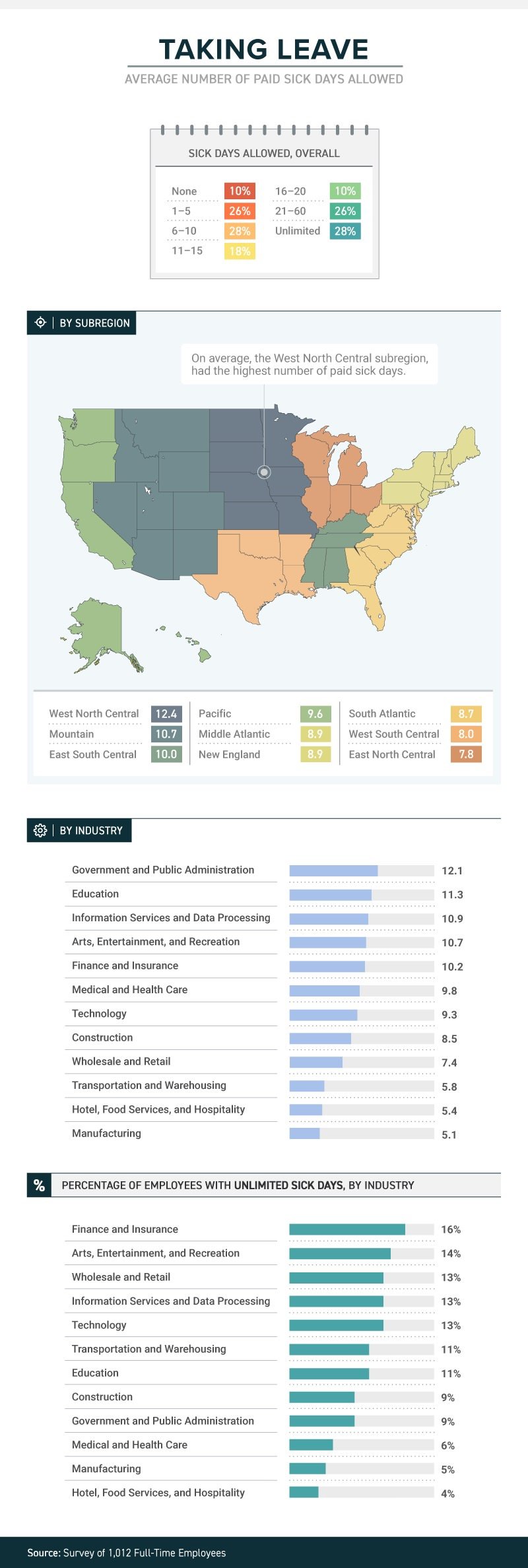Give employees time back in an always-on working world
Occasionally, work extends beyond the traditional workday, no matter how efficient your employees are. With time being the most precious benefit of all, a growing number of employers are offering benefits designed to save employees time. Read on to learn more.
When it comes to employee benefits, what do people really want?
As HR and benefits professionals, we shouldn’t make broad assumptions or generalizations about what benefits our employees need or want. Each employee in any given organization is an individual with different circumstances to be met at every stage in their lives — from those entering the workforce to those preparing to retire, and everyone in between. This is why employers must differentiate their benefits packages to meet the needs of a diverse and multigenerational workforce. And as consumers demand more choice in how they spend their benefits dollars, employers are getting more creative and curating a more expansive set of options for everyone.
No matter how efficient an employee is, work inevitably extends beyond the traditional workday from time to time. Similarly, as the lines between home and work blur with flexible work arrangements and email available 24/7 on smartphones, employees still need to take care of personal tasks, like scheduling family dentist appointments, setting up child care, disputing medical bills or calling the veterinarian … all during the workday.
Regardless of generation, industry, position or title, people are yearning to find the right balance between work and life demand. Time is the most precious benefit of them all. As a result, there are a growing number of employers offering benefits designed to save employees time.
Previously offered predominantly by large, tech companies in Silicon Valley, we’re seeing time-saving benefits spread to employers and industries of all kinds and encompass a variety of conveniences, from on-site dry cleaning pickup, to employer-funded shuttles to get employees to and from work, gym memberships, grocery delivery and services like dog walking and personal errands. This benefits category can also include more significant, personalized benefits like concierge health services, assistance in evaluating elderly care options, telehealth for humans and pets, and emergency childcare services.
Once seen as just perks, these services run deeper. Employers care about their people, and these time-saving benefits — anything people leave work early for, or deal with during the work day — has created a new benefits category that increases employees’ productivity and capacity for work by eliminating distractions and freeing up mental space. While these types of benefits may seem like “nice to have” instead of essentials, they can add up and make a substantial difference in employees’ lives.
Life is complicated. Things go wrong that impact productivity, contribute to presenteeism and the well-being of our workforce; these employee benefits offered through employers are returning valuable time back into someone’s day, helping them focus on work and better balance work and life expectations.
Employees need HR’s help. By not offering a wide variety of benefits personalized to the workforce, employers are missing out on an opportunity to provide great value to employees and make a tremendously positive change in their lives. But many HR professionals falsely assume employees will ask for voluntary benefits directly and proactively make suggestions about what would help them. You may say, “My employees aren’t coming to me asking for things like elder care services, so they don’t need them.” My response is, of course, they’re not asking: they may not want you to know about challenges they’re facing in their personal lives.
Employee’s personal situations are just that - deeply personal. They may be suffering in silence. Americans are now facing the highest housing, education and medical costs in our history, meaning nearly everyone is stressed out about family, work and finances; it’s causing problems in the workplace. If their minds are somewhere else and not focused on work, their productivity could be suffering.
Open Enrollment is rapidly approaching. Don’t wait for your employees to ask you for benefits. Take advantage of OE to ask your employees what they’re looking for, as this is the time they’ll already be assessing what types of benefits they need in the coming year anyway. Use this time to survey the workforce to see what people do or don’t like about their benefits. Be sure to specifically ask “What can we offer you?”
It’s a question, and a gesture, that may matter more to employees than you know.
This article originally appeared in Employee Benefit Adviser.
SOURCE: Oldham, J. (14 September 2018) "Give employees time back in an always-on working world" (Web Blog Post). Retrieved from https://www.benefitnews.com/opinion/give-employees-time-back-in-an-always-on-working-world?feed=00000152-18a4-d58e-ad5a-99fc032b0000
9 Simple Ways to Deal With Stress at Work
The Centers for Disease Control and Prevention reports that 29 to 40 percent of Americans are extremely stressed at work. Read this blog post for nine simple ways to deal with stress at work.
According to research, the percentage of Americans who are stressed at work is high, and it’s only getting higher. According to the CDC’s National Institute of Occupational Safety and Health, studies have found the number of Americans who are “extremely stressed at work” range between 29 percent to 40 percent.
Unfortunately, work stress has significant health consequences that range from the relatively benign—more colds and flus—to the more serious, like heart disease and metabolic syndrome. But, because stress at work is so common, finding a low-stress job may be difficult or impossible for many people. A more realistic choice would be to simply adopt more effective strategies to reduce stress at work. Here are some stress management techniques to try.
Start Your Day Off Right
After scrambling to get the kids fed and off to school, dodging traffic and combating road rage, and gulping down coffee in lieu of something healthy, many people come in already stressed, and more reactive to stress at work. In fact, you may be surprised by how much more reactive to stress you are when you have a stressful morning. If you start off the day with good nutrition, proper planning, and a positive attitude, you may find the stress of the workplace rolling off your back more easily.
Be Clear on Requirements
A factor that contributes to job burnout is unclear requirements. If you don’t know exactly what’s expected of you, or if the requirements keep changing with little notice, you may find yourself much more stressed than necessary. If you find yourself falling into the trap of never knowing if what you’re doing is enough, it may help to have a talk with your supervisor and go over expectations, and strategies for meeting them. This can relieve stress for both of you!
Stay Away From Conflict
Because interpersonal conflict takes a toll on your physical and emotional health, and because conflict among co-workers is so difficult to escape, it’s a good idea to avoid conflict at work as much as possible. That means don’t gossip, don’t share too many of your personal opinions about religion and politics, and try to steer clear of colorful office humor. Try to avoid those people at work who don’t work well with others. If conflict finds you anyway, learn how to deal with it appropriately.
Stay Organized
Even if you’re a naturally disorganized person, planning ahead to stay organized can greatly decrease stress at work. Being organized with your time means less rushing in the morning to avoid being late and rushing to get out at the end of the day. Keeping yourself organized means avoiding the negative effects of clutter, and being more efficient with your work.
Be Comfortable
Another surprising stressor at work is physical discomfort. You may not notice the stress you experience when you’re in an uncomfortable chair for a few minutes. But if you practically live in that chair when you’re at work, you can have a sore back and be more reactive to stress because of it. Even small things like office noise can be distracting and cause low-grade frustration. Do what you can to ensure that you’re working from a quiet, comfortable and soothing workspace.
Forget Multitasking
Multitasking was once heralded as a fantastic way to maximize one’s time and get more done in a day. Then people started realizing that when they had a phone in their ear and were making calculations at the same time, their speed and accuracy (not to mention sanity) suffered. There is a certain kind of frazzled feeling that comes from splitting one’s focus that doesn’t work well for most people. Rather than multitasking, try a new strategy known as chunking.
Walk at Lunch
Many people are feeling ill effects from leading a sedentary lifestyle. One way you can combat that, and manage stress at work at the same time, is to get some exercise during your lunch break and perhaps take short exercise breaks throughout the day. This can help you blow off steam, lift your mood, and get into better shape.
Keep Perfectionism In Check
Being a high achiever can help you feel good about yourself and excel at work. Being a perfectionist, on the other hand, can drive you and the people around you a little nuts. Especially in busy, fast-paced jobs, you may not be able to do everything perfectly. But striving to just do your best and then congratulating yourself on the effort is a good strategy. Your results will actually be better and you’ll be much less stressed at work.
Listen to Music on the Drive Home
Listening to music brings many benefits and can offer an effective way to relieve stress after work. Combating the stress of a long day at work with your favorite music on the drive home can make you less stressed when you get home, and more prepared to interact with the people in your life.
SOURCE: Scott, E. (12 November 2018) "9 Simple Ways to Deal With Stress at Work" (Web Blog Post). Retrieved from https://www.verywellmind.com/how-to-deal-with-stress-at-work-3145273
Are Your Workers Sleeping on the Job?
A recent survey by Accountemps revealed that approximately three-quarters of American adults surveyed reported feeling tired at work often. Consistent tiredness can be a big risk for companies even if employees aren’t actually falling asleep on the job. Continue reading to learn more.
The occasional Monday-morning yawn is a common sight at most offices—but, according to new research, a staggering number of employees report being tired at work. Even if workers aren’t actually sleeping on the job, consistent tiredness could spell big trouble for productivity and retention.
Staffing firm Accountemps surveyed 2,800 American adults working in office environments, finding that nearly three-quarters report being tired at work often (specifically, 31 percent said very often, and 43 perfect reported feeling tired somewhat often). Twenty-four percent said it’s not very often that they’re yawning on the job, while just 2 percent said they never feel tired at work.
The report also ranked the top 15 “sleepiest” cities based on survey responses, with Nashville, Tenn. claiming the No. 1 spot, followed by a three-way tie between Denver, Indianapolis and Austin, Texas.
Michael Steinitz, executive director of Accountemps, noted that on-the-job errors would naturally follow if you have a workforce of tired employees. And, he says, “Consider the underlying causes of why employees are sleepy: If it’s because they’re stretched too thin, retention issues could soon follow.”
Those ideas are bolstered by research from Hult International Business School, which found that the 1,000 workers in its study average about 6.5 hours of sleep per night, lower than the seven to eight hours recommended by the American Academy of Sleep Medicine. Even a half-hour less than the optimal sleep time, researchers found, led to poorer workplace performance. Tired workers reported a lack of focus, needing more time to complete tasks, struggling with creativity, lacking motivation to learn and challenges to multitasking. Many of those side effects of being tired at work, the researchers wrote, are often mistakenly attributed to poor training or work culture when, in reality, they may stem from sleeplessness.
Lack of sleep has a well-documented impact on physical health, and Hult also noted its effects on mental wellness. A vast majority of respondents (84 percent) said they feel irritable at work when they’re tired, and more than half reported feelings of frustration and stress—all of which, researchers noted, can impact teamwork and collaboration.
Accountemps suggested a number of ways employees can guard against being tired at work: physical exercise, being more communicative with managers and leaving work at the office, such as by not bringing a phone or laptop to bed to decrease the chances of letting work communications keep them up at night. On the employer side, the firm recommended managers set reasonable office hours, increase face-to-face meetings with subordinates to see where support is needed and encourage workers to unplug when they leave the office.
SOURCE: Colletta, J. (26 October 2018) "Are Your Workers Sleeping on the Job?" (Web Blog Post). Retrieved from https://hrexecutive.com/are-your-workers-sleeping-on-the-job/
HR’s recurring headache: Convincing employees to get a flu shot
According to The National Institute for Occupational Safety and Health, the flu cost U.S. companies billions of dollars in medical fees and lost earnings. Read this blog post to learn how HR departments are convincing their employees to get a flu shot.
Elizabeth Frenzel and her team are the Ford assembly line of flu shots: They can administer about 1,800 flu shots in four hours.
Frenzel is the director of employee health and wellbeing at the University of Texas MD Anderson Cancer Center, and with 20,000 employees, she is no stranger to spearheading large flu shot programs. The center where Frenzel administers flu shots has roughly a 96% employee vaccination rate. Back in 2006, only about 56% of employees got their shots.
“When you run these large clinics, safety is critically important,” she says.
Problems like Frenzel’s are not unique. Every fall, HR departments send mass emails encouraging employees to get vaccinated. The flu affects workforces across the country, costing U.S. companies billions of dollars in medical fees and lost earnings, according toThe National Institute for Occupational Safety and Health. It is not only a cause of absenteeism but a sick employee can put their coworkers at risk. Last year the flu killed roughly 80,000 people, according to the Centers for Disease Control.
Even if an employer offers a flu shot benefit, the push to get employees to sign up for the vaccine can be a two-month slough, with reminder emails going unanswered. Moreover, companies often contend with misconceptions about the shot, such as the popular fallacy that shots will make you sick, running out of the vaccine, and sometimes just plain employee laziness.
In Frenzel’s case, increasing the number of employees who got flu shots weren’t just a good idea, but it was needed to protect the lives of the cancer patients they interact with every day. The most startling fact, she says, was that healthcare workers who interact with patients daily were less likely to get vaccinated.
“So that’s how we started down the path,” she says. “Really targeting these people who had the closest patient contact.”
Frenzel credits the significant increase in employee participation in the flu shot program to several factors. They made the program mandatory — a common move in the healthcare industry — but Frenzel says their improvement also was related to flu shot education. The center made it a priority to explain to staff members exactly why they should get vaccinated. Frenzel made it more convenient, offering the vaccine at different hours of the day, so all employees could fit it into their schedule. They also made it fun, offering stickers for employees to put on their badge once they got a shot. Every year, she says, they pick a new color.
Employers outside of the medical industry are focused on improving their flu shot programs, including Edward Yost, manager of employee relations and development at the Society for Human Resource Management, who helped organize a health fair and flu shot program for 380 employees.
Yost says onsite flu shot programs are more effective than vouchers that allow employees to get vaccinated at a primary care doctor or pharmacy. The more convenient you make the program, he says, the more likely employees will use it.
“There’s no guarantee that those vouchers are going to be used,” he says. “Most people aren’t running out to a Walgreens or a CVS saying, please stab me in the arm.”
Besides the convenience, employees are more likely to sign up for a shot when they see co-workers getting vaccinated, Yost says. If a company decides to offer an onsite program, planning ahead is key. Sometimes employees will not sign up in advance for the vaccine but then decide they want to get one once the vendor arrives onsite. Yost recommends companies order extra vaccines.
“Make sure that you’re building in the expectation that there's going to be at least a handful of folks who are more or less what you call walk-ins in that circumstance,” he says.
Incentivizing employees to get the flu shot is also important, Yost says. Some firms will offer a gym membership or discounted medical premiums if they attend regular checkups and get a biometric screening in addition to a flu shot. He recommends explaining to employees how a vaccine can help reduce the number of sick days they may use.
“Employees need to see that there’s something in it for them,” Yost says. “And quite honestly, being sick is a miserable thing to experience.”
Affiliated Physicians is one of the vendors that can come in and administer flu shots in the office. The company has provided various employers with vaccines for more than 30 years, including SourceMedia, the parent company of Employee Benefit News andEmployee Benefit Adviser. In the past 15 years, Ari Cukier, chief operating officer of the company, says there’s been an increase in the amount of smaller companies signing up for onsite vaccines. HR executives should be aware of the number of employees signing up for vaccinations when scheduling an onsite visit.
“We can’t go onsite for five shots, but 20-25 shots and up, we’ll go,” Cukier says.
Cukier agrees communication between human resources departments and employees is crucial in getting people to sign up for shots. Over the years, he’s noticed that more people tend to sign up for shots based on the severity of the previous flu season.
“Last year, as bad as it was, we have seen a higher participation this year,” he says.
Brett Perkison, assistant professor of occupational medicine at the University of Texas School of Public Health in Houston, says providing a good flu shot program starts from the top down. The company executives, including the CEO and HR executives, should set an example by getting and promoting the shots themselves, he says.
It’s also important to listen to employee concerns. Before implementing a program, if workers are taking issue with the shot, it’s best to hold focus groups to alleviate any worries before the shots are even being administered, he says.
Some employees may even believe misconceptions like the flu shot will make one sick or lead to long-term illnesses, he says. Others may question the effectiveness of the shot. Having open lines of communication with employees to address these concerns will ensure that more will sign up, Perkison says.
Regardless of the type of flu shot program, the most important part is preventing illness, SHRM’s Yost says. While missing work and losing money are important consequences of a flu outbreak, having long-term health issues is even more serious, he says. Plus, no one likes being sick.
“Who’s going to argue about that?” he says.
This article originally appeared in Employee Benefit News.
SOURCE: Hroncich, C (24 October 2018) "HR’s recurring headache: Convincing employees to get a flu shot" (Web Blog Post). Retrieved from https://www.employeebenefitadviser.com/news/hrs-recurring-headache-convincing-employees-to-get-a-flu-shot
Ready for the sounds of office sniffles?
A recent study by law firm, Farah and Farah, states that one in four full-time workers receive between 1 and 5 sick days. Continue reading to learn more.
It’s not just a matter of whether they feel well enough to work, or whether they have sick days. The boss’s attitude about whether workers should take sick days or not can determine whether they actually do stay home when they’re sick, or instead come to work to spread their germs to all and sundry.
A new study from law firm Farah & Farah finds that even though it can take a person some 10 days to fully recover from a cold, approximately 10 percent of full-time workers in the U.S. get no sick days at all (part-timers don’t usually get them either), while more than 1 in 4 have to make do with between 1 and 5 sick days. Just 18 percent get enough sick time to actually recover from that cold—between 11 and 15 days.
The amount (or presence) of sick time varies from industry to industry, with government and public administration providing the most (an average of 12.1) and both hotel, food services and hospitality and manufacturing providing the least (an average of 5.4 for the hospitality industry and 5.1 for manufacturing). Some lucky souls actually get unlimited sick days, although even then they don’t always use them.
Regardless of industry, or quantity, just because workers get sick days it doesn’t mean they use them. Workers often worry that they’ll be discouraged from using them, with employers who may provide them but not encourage employees to stay home when ill. In fact, 38 percent of workers show up to work whether they’re contagious or not. Sadly for the people they encounter at work, the most likely to do so are in hospitality, medical and healthcare and transportation. Plenty of germ-spreading to be done in those professions!
And their employers’ attitudes play a role in how satisfied they are with their jobs. Among those who work for the 34 percent of bosses who encourage sick employees to stay home, 43 percent said they’re satisfied with their jobs in general. Among those who work for the 47 percent of bosses who are neutral about the use of sick days, that drops to 21 percent—and among the unfortunate workers who work for the 19 percent of bosses who actually discourage workers from staying home while ill, just 12 percent were satisfied with their jobs.
When it comes to mental health days (no, not that kind; the ones people really need to deal with diagnosed mental health conditions), fewer than 1 in 10 men and women were willing to call in sick. Taking “mental health days” when physically healthy, however, either to play hooky or simply have a vacation from the office, is something that 15 percent of respondents admitted to.
SOURCE: Satter, M (5 October 2018) "Ready for the sounds of office sniffles?" (Web Blog Post). Retrieved from https://www.benefitspro.com/2018/10/05/ready-for-the-sounds-of-office-sniffles/
Original report retrieved from https://farahandfarah.com/studies/sick-days-in-america
How tech solutions can take aim at employee stress
Workers are stressed out. Stress can lead to a number of grave health conditions and unhealthy coping mechanisms. Read this blog post to learn how technology is helping battle employee stress.
In case you haven’t noticed, today’s workforce is completely stressed out. Overwhelming workloads, looming deadlines and the 24/7 always-on mentality is becoming the corporate America norm. Unfortunately, long-term stress can contribute to everything from heart disease to strokes, cancer and other grave conditions. Stressed employees also are more likely to be unmotivated, quit their jobs, perform poorly and have low morale and higher incidence of illness and accidents.
Because everyone copes with stress differently, some deal with it in unhealthy ways, such as overeating, eating unhealthy foods, smoking cigarettes or abusing drugs and alcohol, according to the American Psychological Association. This vicious cycle makes stress one of the top health concerns, with 49% of individuals at risk for stress-related illnesses, second only to weight, which impacts 69% of individuals, according to internal research.
All in all, employee stress is causing employers … well, stress. In fact, the cost of work-related stress in the US is $300 billion annually, according to the American Institute of Stress. Further, behavioral-related disability costs have increased more than 300% in the past decade and account for 30% of all disability claims.
While more than two-thirds of US corporations have adopted some kind of health and wellness program, the majority doesn’t adequately address or even include solutions that support mental health. That’s why it’s critical to educate employers on the real cost of stress and the benefits of an effective stress-related wellness initiative to help keep health costs down, while keeping employee productivity and retention up.
However the realities of promoting a healthy balance for employees, while simultaneously ensuring the delivery of quality work that’s completed on time, is much easier said than done. Anecdotally, we often hear that employees don’t feel they are benefiting from their corporate wellness plans because they don’t have time or they can’t break away from their desks.
Walk the walk
What can employers do to break the cycle? First and foremost, stress reduction starts from the top-down as management and bosses play a key role in employee adoption and lasting engagement. Not only are they responsible for communicating about available resources, they need to literally and figuratively walk the walk. When leadership incorporates stress management into their own lives, employees understand the company's commitment to these practices and feel more comfortable taking a break.
The role of technology
Some of the most effective wellness programs leverage a variety of technologies that offer something for everyone and makes it easier for employees to engage and benefit, regardless of where they are or the time of day. Popular technology-based solutions include:
· Digital health platforms — Connecting employees to health coaches, board-certified physicians, and colleagues who can provide support for those dealing with stress and offer guidance with chronic disease resulting from, or adding to, individuals’ stress levels.
· Digital health games — Employees receive encouragement and rewards through fun, engaging games in which they compete against others in stress-busting exercise to reach health goals.
· Wearables — Employees can sync popular wearable devices, such as their Apple Watch, to visualize the impact of guided meditations on their heart rate. Through smart feedback, employees can better understand which meditation exercises, locations, and times of day have the greatest impact on their heart rate, and therefore, stress level.
· Virtual Reality guided meditation — Combining an immersive VR with mindfulness meditation can help transport employees to relaxing environments, bringing a whole new dimension to the meditation experience. Using apps on their cell phones and portable VR headsets, employees are able to practice meditation from any place, at any time. In addition to stress reduction, a growing body of scientific evidence suggests that meditation can heighten attention spans, improve sleep, reduce chronic pain and fight addictions like drug and alcohol abuse, and binge eating.
The bottom line: Stressed-out employees can have significant health and financial consequences for your clients. With the start of open enrollment season just a few short months away, it’s time to start educating your customers about the benefits of incorporating mental health programs, like digital health platforms and meditation, into their corporate wellness plans to mitigate employee stress and improve productivity.
Miller, M. (11 July 2018) "How tech solutions can take aim at employee stress" (Web Blog Post) Retrieved from https://www.employeebenefitadviser.com/opinion/mental-fitness-why-your-corporate-wellness-portfolio-needs-mental-health-solutions
Top 10 Corporate Wellness Habits to Adopt During 2018
With the New Year in full swing, you may be considering how to turn your life around for the better - drop pounds, kill unhealthy chocolate addictions, quit binging every Netflix season ever, etc... But what about making lasting habits within the workplace?
Too often, we make a list of resolutions, and we forget where we spend most our time. Work is work, but that doesn’t mean we can’t implement some of the changes we make in our personal lives in the workplace, as well.
Today, we thought we’d offer up 10 different ideas for employers (or for employees to offer to their boss) to try and implement within the workplace – from wellness challenges to recess. Try one, combine a few, or do them all! The best part about making resolutions is making them unique to yourself and your company. So, don’t be afraid to get creative!
-
Offer healthy alternatives to traditional junk food items
Just a simple switch of snack foods in the office can cut unnecessary calories! Snacking on healthy items can make mindless snacking not so bad.

-
Offer standing desks
This easy switch will be one of the new year’s trendiest wellness tactics. Select desk options that allow users to easily switch between standing and sitting while working to allow for better blood flow throughout the day.

-
Try a wellness challenge
There’s nothing like some healthy interoffice competition to get people motivated. Select a wellness challenge that is easy and effortless to incorporate into your workplace. This could be a monthly or a weekly challenge, switch it up each month/week to keep things interesting!

-
On-site yoga classes
Another wellness trend that will continue into 2018 is managing stress through yoga. Mindfulness and meditation offer a slew of benefits to help employees relieve stress. Invite an instructor to your office every couple of weeks to guide the team through a yoga class.
-
Celebrate “Wellness Wednesday”
Make hump day something to celebrate and begin to tackle wellness in the office in a manageable way. One day a week can be a gateway to a much healthier lifestyle.

-
Listen to your employees
Survey employees to find out what is working and what isn’t instead of wasting time and energy on things that aren’t engaging your employee population. Use a site like Survey Monkey or Google Forms to create a survey to collect feedback from employees.

-
Participate in a 5K or other group fitness activities
Find a 5K in your community or choose another group fitness activity and cover the entry fee for anyone choosing to participate.
-
Post signs near elevators and escalators encouraging employees to take the stairs instead
Sometimes just seeing this reminder is all the motivation needed to be a little more active!
-
Schedule recess
Pick a 15-minute time of the afternoon for everyone to get away from his or her desk. Go outside, socialize with each other and enjoy some fresh air! Taking walks has also been shown to increase creativity.

-
Reward volunteers
Pay your employees for any volunteer hours up to a certain amount or allot a certain amount of time each month for employees to get away from their desk and get active in the community. Ideas include volunteering at a local food bank or cleaning up a local park, beach, or trail. You’ll benefits from both team building and group physical exercise!
Give one or more of these ideas a try and if they work out for you, let us know! The important lesson here is to remember your work-life is just as important to better as your personal life. When it comes to New Year Resolutions, make sure they encompass every aspect of your life and definitely don’t forget to include your employees in your thoughts.
Stay healthy, have fun, and Happy New Year!
No mat needed: Yoga at your desk
A sticky mat seems de rigueur for modern-day yogis, but that doesn’t mean a long piece of rubber is required to take part in the ancient practice.
Yoga first and foremost is about being present, and it starts with attentive breathing. You can do that anywhere and without props.
Once you’ve got the hang of steady breathing, matching inhales and exhales to movements helps your body relieve tension and your muscles wake up. In fact, the key to the physical practice of yoga is matching conscious breath to movement. It’s also a big part of what makes yoga feel great. Without it, you’d be doing calisthenics.
We’ve rounded up a few yoga exercises you can do easily and safely at work. All require standing – good news, given sitting is pretty bad for us. It’s best to do them with your feet flat on the ground.
Stand with your feet hip-distance apart. Inhale as you bring your arms overhead. Keep your chin level with the ground. Exhale as you soften your knees and twist your torso to the right, letting your head follow and dropping your arms to shoulder-height. Inhale as you turn back to center, lifting your arms overhead. Do the twist to the left. Repeat this pattern several times.
Benefits: Strengthens abdominal muscles, shoulders and upper arms. Stretches back and chest. Lubricates joints of the spine, including in the neck, and shoulders.
Chair
Stand with your feet hip-distance apart, arms at your sides. Inhale as you lift the crown of your head. Exhale as you bend your knees (typically you want to track each knee over the middle of its corresponding foot), like you’re sitting back in a chair. Hinge at your hips, tilting your torso forward up to 45 degrees. Lift your arms to a comfortable height. Inhale as you return to standing, crown lifted, arms lengthening down. Repeat several times.
Benefits: Strengthens front thighs, buttocks, core, upper back and upper arms. Stretches calves and side torso. Lengthens spine. Lubricates joints of the ankles, knees, hips and shoulders.
Triangle
Stand with your feet slightly wider than hip-distance apart, toes pointing same direction as your chest, then turn your right foot 90 degrees to the right, and your left foot about 15 degrees to the right, making sure your left toes point the same direction as your left knee. Inhale as you extend your arms out from the shoulders and lengthen your spine. Exhale as you tilt your torso to the right, releasing your right arm toward your right leg and your left arm up to a comfortable height. Don’t turn your chest toward your right leg. Drop your gaze to the ground if you feel tension in your neck. Hold for several breaths, and repeat with the left leg.
Benefits: Strengthens front thighs, buttocks, side torso and neck. Stretches calves, back thighs and side torso. Lubricates joints of the hips and shoulders.
You can read the original article here.
Source:
Malek M. (2 May 2017). "No mat needed: Yoga at your desk" [Web blog post]. Retrieved from address https://worklife.coloniallife.com/2017/05/no-mat-needed-yoga-desk/?utm_sq=flegx3i374&utm_source=Twitter&utm_medium=social&utm_campaign=WorkLifeTweets&utm_content=Articles
What to consider when redesigning a benefits program
"The secret sauce to getting employees engaged and on board is to create and promote a culture of health." Check out this article from Employee Benefit Advisor for an insight look at designing successful benefit programs.
The concept of design is matching people’s needs with what’s technologically feasible — and redesigning health plans is no different for employers looking to shake things up.
Creating a culture of health, rather than looking at plans as a way to curb costs, should be a priority for benefits executives when they redesign benefits programs, a panel of industry insiders said recently at the National Alliance of Healthcare Purchaser Coalitions conference in Arlington, Va.
Employers must have design standards and strive to make things better for employees, explained Marcia Peterson, manager of benefit design and strategy at Washington State Health Care Authority. That was her strategy when WSHCA redesigned its benefits program. She wanted to change the experience from start to finish and looked to the Bree Collaborative, an evidenced-based quality standard, as her blueprint for design, she said.
The goal of the collaborative is to identify and recommend evidence-based strategies in areas where there is unnecessary change in the way care is delivered and/or increased care that isn’t improving outcomes.
![[Image credit: Bloomberg]](https://assets.sourcemedia.com/dims4/default/439cd5c/2147483647/resize/680x%3E/quality/90/?url=https%3A%2F%2Fassets.sourcemedia.com%2F50%2F14%2F18ee50ce4a0aa49c78100ef0ba68%2Fhealthcare.Office.Bloomberg.jpg)
“What we focused on was the member experience and quality … not cost,” Peterson said, comparing healthcare purchasing to buying a cup of coffee.
“If we bought coffee the way we bought healthcare, it would be awful,” she said, noting consumers would need to get a cup from one vendor, some beans from another and then find someone to grind the beans.
But there is a disconnect in benefit plans between what employers say and what employees feel, added Ron Goetzel, vice president, consulting and applied research, at IBM Watson Health. He suggests employers find what the employee pulse is when designing benefit programs.
“We always look at the cost, but we never ask the consumer about the process,” he said. The secret sauce to getting employees engaged and on board, he said, is to create and promote a culture of health.
Goetzel said employers have the misconception that if they pay employees to quit smoking or eat healthy that they’ll do it. “Money alone won’t do it; it’s got to be an internal motivation,” he says. Employers need to exude health and wellness as a part of the organization. “[Employees] do it because they want to have a healthier family, money may be the wrong signal,” he adds.
In designing benefit plans, the goal should not to contain healthcare costs, said Ray Fabius, co-founder of HealthNEXT, a healthcare consulting group. “The real goal is to bend the healthcare cost curve, and it’s possible,” he said.
For the last 50 years, medical inflation has exceeded general inflation by about two to one, he explained. And that’s despite the fact that “we’ve come up with all these benefit designs — from HMOs to PPOs and now HDHPs and benefit exchanges.” Still, he said, one thing is absolutely certain: changing design by itself is not going to stem the march of higher costs or make a workforce more productive.
Echoing Goetzel, Fabius said that talking to and surveying employees about what they want from their benefits can be insightful and even therapeutic.
“You have to keep the well people well, reduce the risks of the high-risk and help people with chronic illness not succumb to the complication of their chronic conditions,” he said of designing benefit programs.
Read the original article.
Source:
Otto N. (20 November 2017). "What to consider when redesigning a benefits program" [Web blog post]. Retrieved from address https://www.employeebenefitadviser.com/news/what-to-consider-when-redesigning-a-benefits-program?brief=00000152-1443-d1cc-a5fa-7cfba3c60000
SaveSave
SaveSave
SaveSave
Are e-cigarettes friend or foe to employee wellness?
Originally posted September 8, 2014 by Nick Otto on https://ebn.benefitnews.com
As the gap widens on whether e-cigarettes are part of the solution or still part of the greater problem of employee smoking cessation, their popularity is still on the rise. Experts from the health management group HealthFitness have provided some additional tips for employers taking on the challenge of creating e-cigarette policies in the workplace.
The group advises workplace policies which classify e-cigarettes in the same regard as tobacco products. In doing so, it will minimize risks from known and unknown toxins as research continues on the long-term health impact of the devices.
“This recommendation is the highest standard of public safety,” Dennis Richling, HealthFitness’ chief medical and wellness officer, says in a recent blog post. In doing so, benefit managers’ policies will align with the current trends other employers are reportedly doing, he adds.
Currently, the Food and Drug Administration doesn’t regulate the use of e-cigarettes as smoking cessation devices. As such, the use of incentives to discourage the use of e-cigarettes has no clear right or wrong answer, “but is driven by what an employer believes best fits their situation.” Before making that decision, Richling says he recommends employers consider the following questions:
- Are you prepared to add complexity to your incentive programs?
- Does adding e-cigarettes matter?
- Do you use blood or saliva testing with your smoking cessation program?
As one example, HealthFitness notes there are several ongoing trials researching use of e-cigarettes as cessation devices. Adding their use as an incentive may “create an extra level of effort to manage what may be an appropriate use of e-cigarettes.”
Lastly, HealthFitness recommends using health assessments to educate employees on e-cigarettes. Because the likelihood that current users are either former tobacco users or current “dual users” of both e-cigarettes and regular tobacco progress, tracking e-cigarette data independently is still limited.
“However, the information needed to inform almost all e-cigarette users can be gained by assessing smoking status,” HealthFitness says. “And there is value in providing messaging to health assessment users who use tobacco products about the risks and the facts concerning e-cigarette use.”












